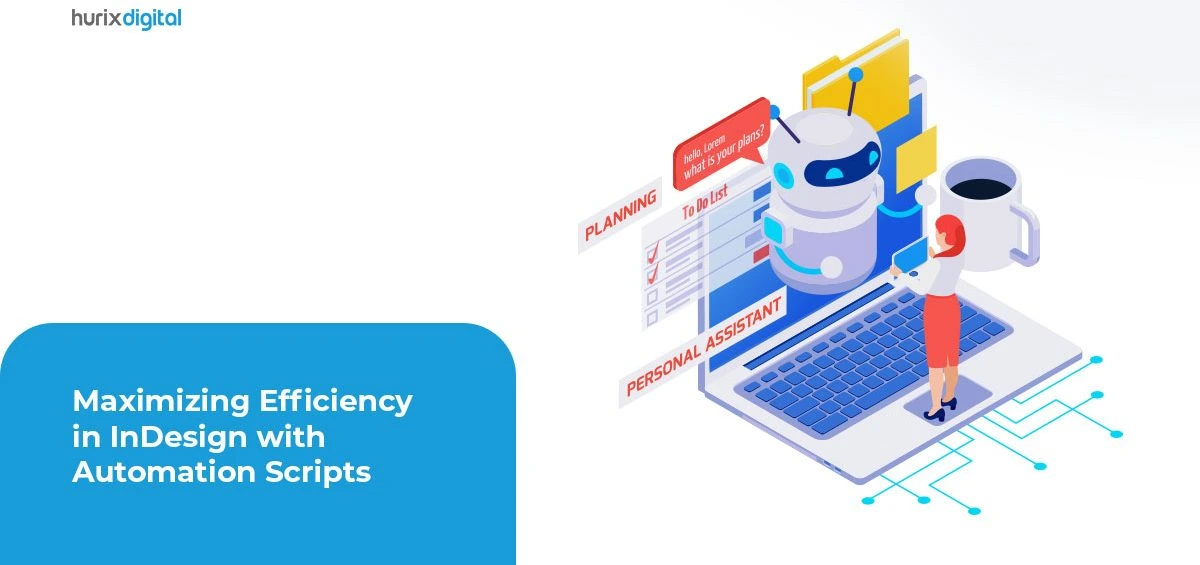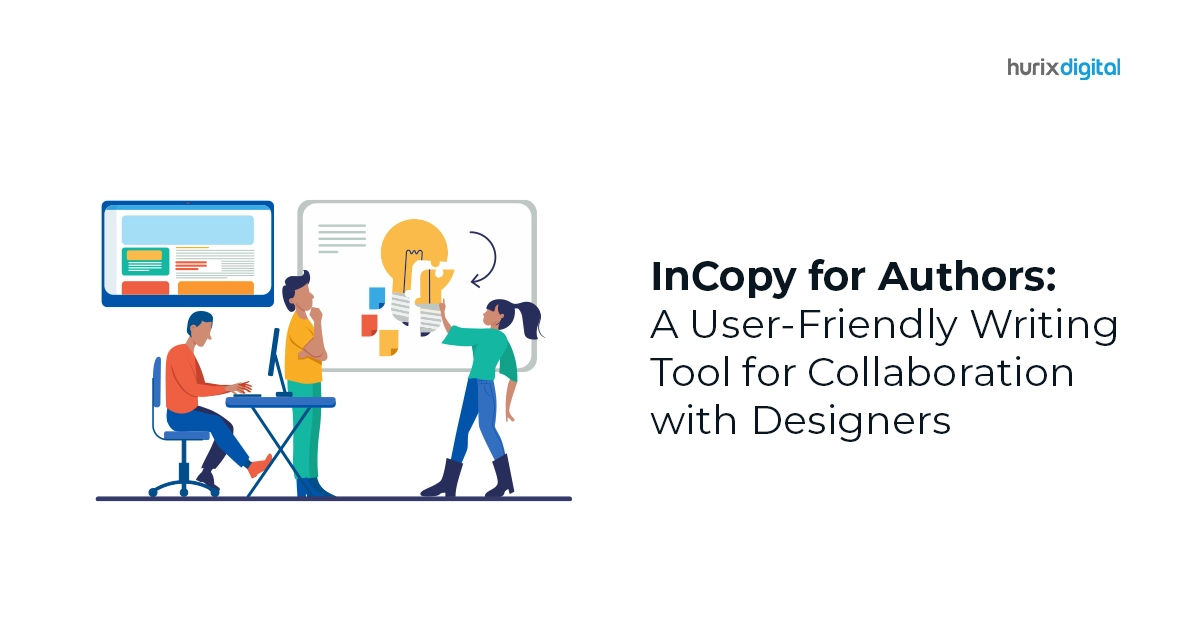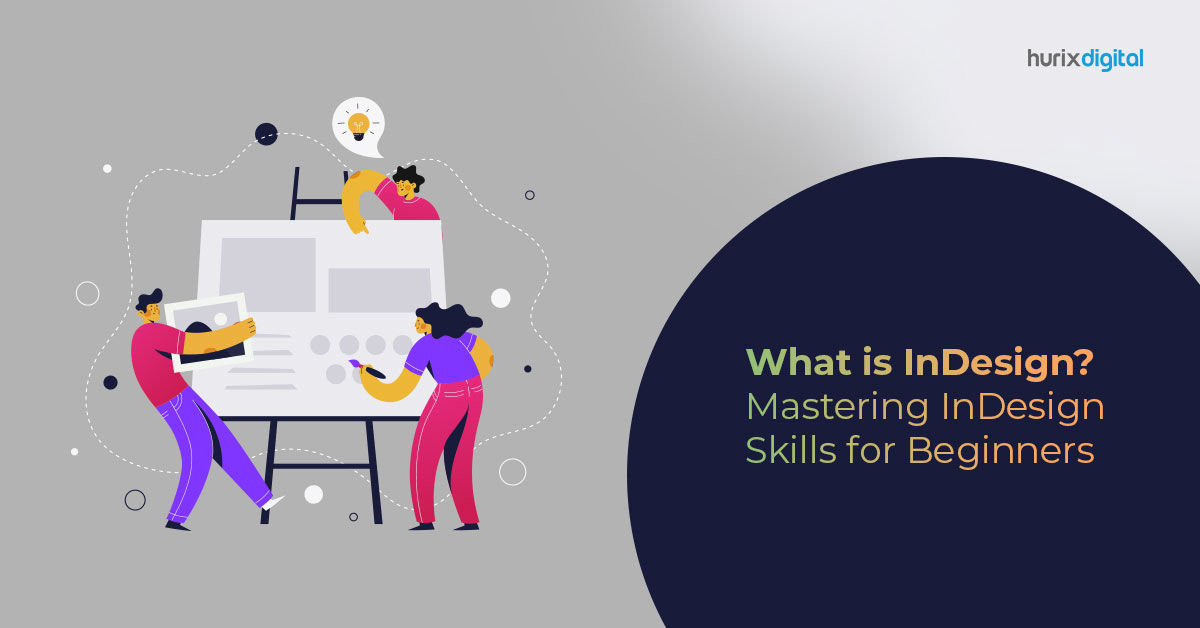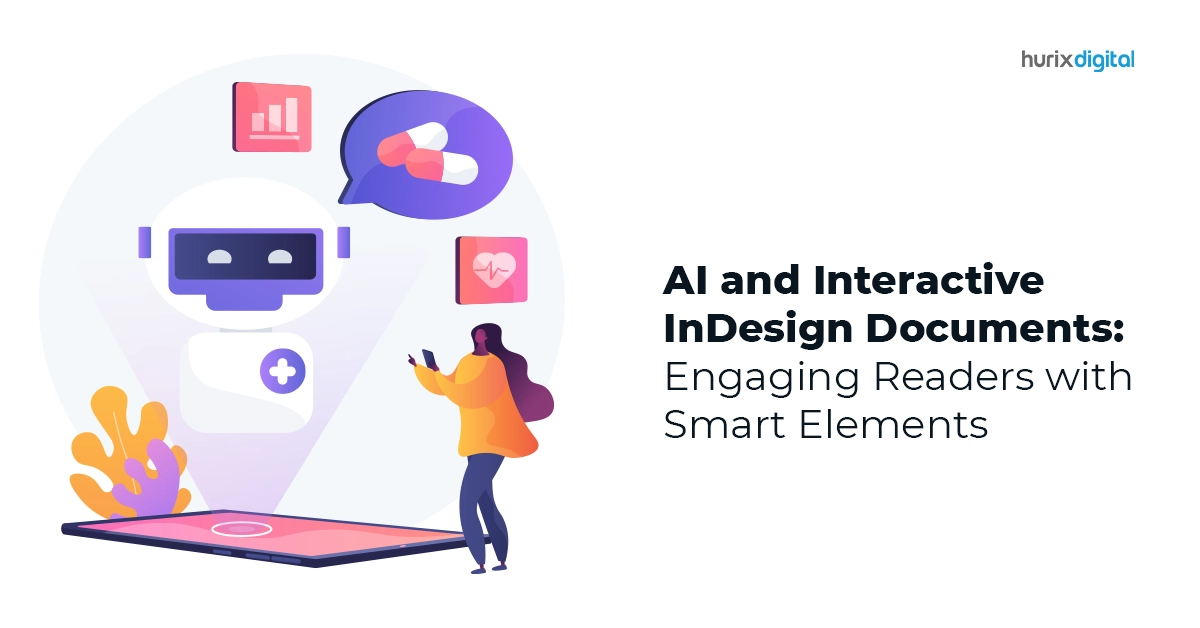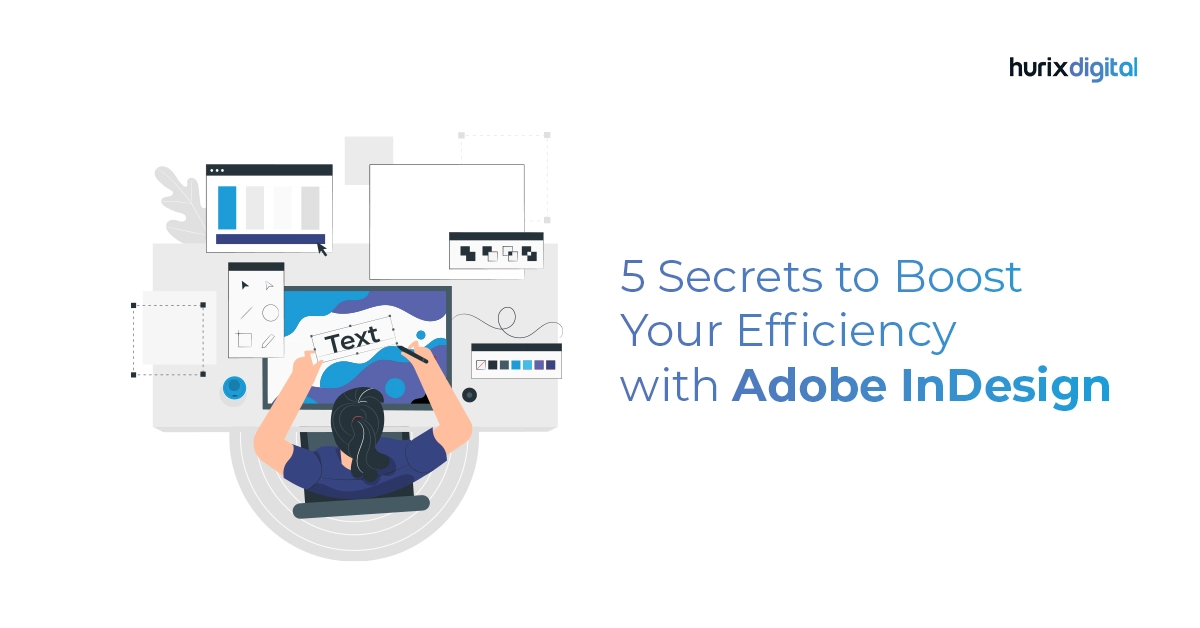
Five Secrets to Boost Your Efficiency with Adobe InDesign
Summary
This article will help you to optimize your workflow and enhance your design skills to next level. InDesign is a powerful tool that allows users to merge the text, images, graphics, and floating elements to produce high quality layouts for print and digital products. This article will show you five best secrets that will help you enhance your productivity and optimize your workflow.
InDesign is a professional publishing software that creates and designs visually appealing documents, such as brochures, magazines, books, flyers, and interactive PDFs. InDesign is a powerful tool that allows users to merge text, images, graphics, and floating elements to produce high-quality layouts for print and digital products.
It is the most versatile tool, it’s essential to optimize your workflow and boost your efficiency. In this blog post, we will reveal five best secrets that will help you enhance your productivity using the InDesign application. Whether you are a beginner or an experienced user my tips will improve your design skills to the next level.
InDesign offers a wide range of features and tools that enable precise control over typography, layout, and design. It supports advanced text formatting options, like character and paragraph styles, automatic text flow, and extensive typographic controls. Users can import text from word processing software and link it dynamically to maintain consistency throughout the document.
The software provides a robust set of drawing and design tools for creating vector graphics, shapes, and customized graphical elements. It supports image manipulation, transparency effects, and integration with Adobe Photoshop and Illustrator for seamless editing. InDesign also offers interactive features like hyperlinks, buttons, multimedia elements, and animation for digital publishing.
In this blog, we will explore how will this revolutionary tool help you to take your productivity to the next level!
Table of Contents:
What is InDesign used for?
InDesign’s robust set of tools, advanced typographic controls, support for vector graphics, and seamless integration with other Adobe Creative Cloud applications make it versatile and essential software for professional designers. Whether you’re creating print materials, digital publications, or interactive content, Adobe InDesign provides the necessary tools and capabilities to bring your creative vision to life.
1. Master the InDesign Tools
To boost your efficiency in Adobe InDesign, it’s crucial to become proficient in using its diverse range of tools. Take the time to familiarize yourself with the selection and editing tools, such as the Selection tool, Direct Selection tool, and Pen tool.
Learning keyboard shortcuts for frequently used functions will save time and minimize unnecessary mouse clicks. Type tool is particularly powerful for text formatting and exploring the various panels and menus will allow you to customize your workspace to suit your preferences. By mastering these tools, you’ll work faster and more efficiently.
2. Harness the Power of Styles
Styles in InDesign are a secret weapon for efficiency. Whether it’s paragraph styles, character styles, or object styles, utilizing them will help you apply consistent formatting and make global changes effortlessly.
By defining and using styles, you can quickly update the font, color, size, spacing, and other attributes throughout your document with just a few clicks, this not only saves time but also ensures a consistent and professional look. Invest some time in creating and organizing your style library to expedite your design process and maintain visual harmony.
Also Read: How to Streamline Your Web Design Workflow with InDesign?
3. Utilize Master Pages
Master Pages are an invaluable feature in Adobe InDesign that can significantly boost your productivity. These templates allow you to set up consistent elements, such as headers, footers, page numbers, and backgrounds, across multiple pages within your document.
By creating or editing a Master Page any changes made will automatically update all associated pages, eliminating the need for manual adjustments. This feature is handy for multi-page projects like books, magazines, and brochures. By leveraging Master Pages, you’ll save time and maintain design consistency effortlessly.
4. Automate Repetitive Tasks with Scripts
InDesign provides a scripting feature that allows you to automate repetitive tasks, further streamlining your workflow. Scripts are performing specific actions within the InDesign application. You can write your scripts or download pre-built scripts from third-party websites.
The scripts may be for anything like resizing images, batch processing files, or generating a table of contents, scripts can handle a wide range of tasks. Exploring the scripting capabilities of InDesign will unveil a world of automation possibilities, enabling you to save time and effort.
5. Embrace Collaboration and Integration
Efficiency goes beyond individual productivity; it involves effective collaboration and integration with other tools and team members. InDesign effortlessly integrates with other Adobe Creative Cloud applications like Photoshop and Illustrator allowing you to import and edit content easily. Creative Cloud Libraries enable you to share assets, styles, and colors across multiple projects, facilitating efficient collaboration. Additionally, InDesign’s interactive features, such as buttons, hyperlinks, and animations, allow you to create engaging digital experiences. By embracing collaboration and integration, you’ll streamline your workflow, enhance creativity, and deliver exceptional results.
Also Read: Tips for Designing Math Books with InDesign: From Concept to Creation
InDesign Tools
InDesign offers a range of powerful tools that enable designers to create visually appealing and professional layouts. Some key tools include the Selection tool for selecting and manipulating objects, the Type tool for working with text and fonts, the Pen tool for creating and editing paths, and the Eyedropper tool for sampling colors and styles.
InDesign also provides tools for working with images, such as the Direct Selection tool for editing image frames and the Content Collector tool for gathering and placing content. With these tools, designers have precise control over their designs, allowing them to create impactful visual compositions.
With its flexible layout options, InDesign allows users to create multi-page documents and apply master pages for consistent design elements across multiple pages. Grids, guides, and aligning tools assist in precise layout arrangement. Additionally, it supports integration with Adobe Creative Cloud, enabling seamless collaboration with other Adobe software like Photoshop and Illustrator.
Conclusion
Boosting efficiency with Adobe InDesign is essential for graphic designers looking to optimize their workflow and deliver exceptional designs. By mastering the InDesign tools, harnessing the power of styles, utilizing Master Pages, automating repetitive tasks with scripts, and embracing collaboration and integration, you can significantly enhance your productivity.
At Hurix Digital, we understand the importance of efficiency and productivity in the creative process. Our expert team can assist you in unleashing the full potential of InDesign and other design tools to elevate your brand and create captivating content.
Contact us today to explore how we can help you achieve your design goals.

Ramprasath is the Project Manager – Operations (HPT-DCT). He is post graduate in computer science and has 8+ years of experience in Project Management and 18+ years of experience in Graphics Designing, Client Management, Resource Management, and managing the Offshore Books and Journals typesetting team. He is proficient in Adobe Creative Suite software, has knowledge of typography and color theory, and has expertise in E2E Project management services for Books and Journals.

